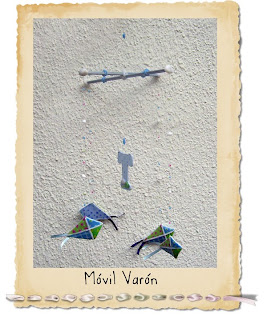
 Clickear en las fotos para verlas más grandes/Click the images to enlarge
Clickear en las fotos para verlas más grandes/Click the images to enlargePersonaje del Ciclo de Ulster de la mitología irlandesa. Aparece en las sagas Tochmarc Emire y Aided Óenfhir Aífe. En la primera, vive en al este de una tierra llamada Alpi, usualmente aceptada como Alba (Escocia), donde está en guerra con otra mujer guerrera, Scáthach. En la otra saga, vive en Letha (la península de Armorica), y Scáthach es tanto su hermana como su rival, y ambas son hijas de Ardgeimm.
En Tochmarc Emire el heroe Cú Chulainn va a entrenarse con Scáthach cuando comienza una batalla con Aífe. Scáthach temiendo por la seguridad de Cú Chulainn e da una posión para dormir y mantenerlo alejado de la batalla, pero una poción que mantendría dormidos por un día a la mayoría, sólo lo duerme por una hora y se une a la refriega. Aífe reta a Scáthach a un combate mano a mano y Cú Chulainn lucha como el campeón de Scáthach, pero antes de la pelea le pregunta a Scáthach qué es lo que más ama Aífe, a lo que ella le responde: su carro y sus caballos. Comienzan a pelear y Aífe destroza la espada de Cú Chulainn, a lo que él grita que el carro y los caballos de Aífe han caído por un precipicio. Cuando ella se vuelve a mirar, él la domina, la arroja sobre su hombro y se la lleva. Ella le pide que le perdone la vida, lo cual él hace bajo tres condiciones: que cese las hostilidades con Scáthach, pase la noche con él y le de un hijo.
Aífe representa el fuego, la lucha y el verano. Su símbolo es la lanza.
Es parte de la serie Diosas de las Cuatro Estaciones, mide 21 cm.
Aífe, Radiant Beauty is a character from the Ulster Cycle of Irish mythology. She appears in the sagas Tochmarc Emire ("the wooing of Emer") and Aided Óenfhir Aífe ("the death of Aífe's only son"). In Tochmarc Emire she lives east of a land called Alpi, usually understood to mean Alba (Scotland), where she is at war with a rival warrior-woman, Scáthach.[1] In Aided Óenfhir Aífe she lives in Letha (the Armorican peninsula), and is Scáthach's sister as well as rival – they are both daughters of Ardgeimm. In Tochmarc Emire the Ulaid hero Cú Chulainn has come to train in arms under Scáthach when a battle breaks against Aífe. Scáthach, fearful of Cú Chulainn's safety, gives him a sleeping potion to keep him from the battle, but a potion that would put most people to sleep for twenty-four hours only knocks him out for an hour, and he joins the fray. Aífe challenges Scáthach to single combat, and Cú Chulainn fights as Scáthach's champion, but before the fight he asks Scáthach what it is that Aífe loves most, which Scáthach reveals is her chariot and horses. They begin to fight, and Aífe shatters Cú Chulainn's sword, at which he cries out that Aífe's chariot and horses have fallen over a cliff. When Aífe turns to look, he overpowers her, throws her over his shoulder, and carries her back to his side. She asks him to spare her life, which he does, on three conditions: that she cease hostilities with Scáthach, spend the night with him, and bear him a son. Aífe represents the fire, the fight and the summer. Her symbol is the apear. She is part of the Four Season Goddesses, she is 21 cm. tall.






 Clickear en las fotos para verlas más grandes/Click the images to enlarge
Clickear en las fotos para verlas más grandes/Click the images to enlarge

 Clickear en las fotos para verlas más grandes/Click the images to enlarge
Clickear en las fotos para verlas más grandes/Click the images to enlarge






